Udupi’s 500 year old mud palace gleams anew. The restoration work was done at the Perdoor Magane Chavady in Sural near Udupi, Udupi district, Karnataka in 2016.
It is a distinct palace of the Tolahar dynasty of 1511 AD, in terms of construction, ‘Vaastu’ and other aspects. It lies on a plot of one acre and dates back to the 15th century, and is completely built from the earth. Suralu was the capital of the Jain Tolahar (Zamindari) dynasty and it is approximately 30 KM’s from Udupi city in Karnataka. Suralu palace has a blend of Vastu derived from Hindu – Jain cultural hierarchy. It also depicts the regional sculptures and Vaastu of that era. It was built using earth and timber. It’s a testimony for the skills of the ancient people as the structure has been built without a foundation except at the front portion.
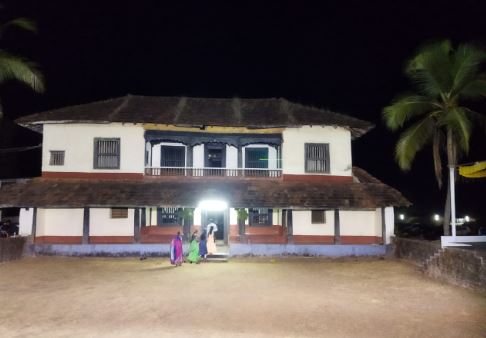
The walls are built of clay and country tiles cover the roof-top while there are sculptures on doors, windowsills, pillars, and the ceiling. The only addition of a modern floor was done in the front portion of the palace during the reign of Koosammadevi Tolaharti in 1858. The palace has seven spacious blocks including a worship centre called Jain Basadi for Parshwanatha.
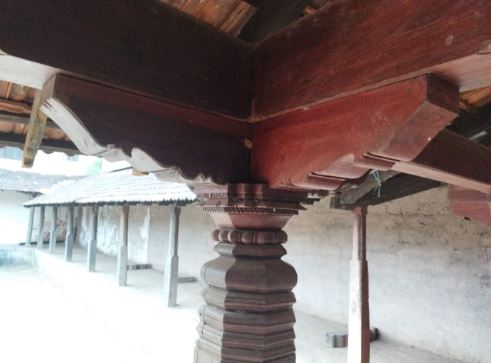
On reading the news in The Hindu, I felt nostalgic. My mother Late Kuradi Lakshmi Devamma was born in Kadangode Hamlet of Hosur Village in 1908. (Died in Feb.1982) Sural is another hamlet in Hosur Village in Udupi Taluk, then in South Kanara Dist, Madras Province; at present in Brahmavar Taluk, Udupi Dist. Karnataka. My mother studied until third class in Sural School along with the daughter of Tholahar. English alphabets were taught in third class. She got married to Kuradi Narayana Kalkura (1898- Nov.1944) in 1918. It was performed in the palatial house of my maternal grandparents in Kadangode. As was the custom in those days, (still continues in some parts of the country) we used to enjoy our holidays in Sural and the yearly car festivals. We used to swim in the ponds and play in the woods. It was our Ooty and Mysore.
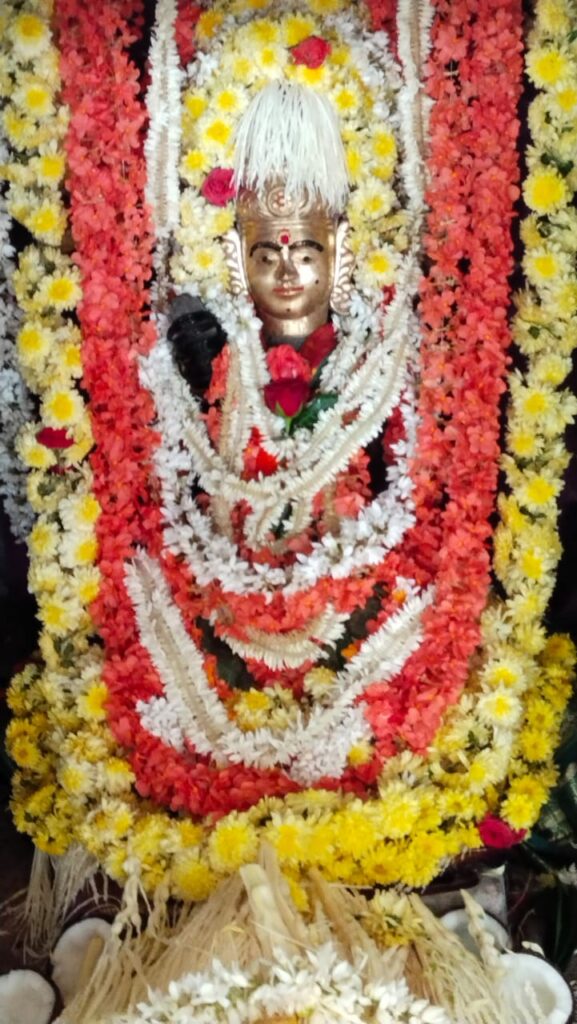
My maternal grandfather, Sivarama Somayaji, was the hereditary village accountant (Karnam – Shyanubhogue) of Hosur and Kenjur Villages. So the Zamindar, Tholahar popularly known as the Arasaru (King) attended my parents’ marriage. My grandfather died in Sept. 1940, when I was a child of three months. He had six daughters and five sons. My mother was the eldest daughter and the second issue. My father used to deputise for him, whenever my grandfather availed leave. It was customary to serve midday meals to all the visitors to the Karnams’ houses. Few would have equaled my maternal grandmother Ramadeviamma in preparing delicious mouth-watering traditional Udupi cuisines.
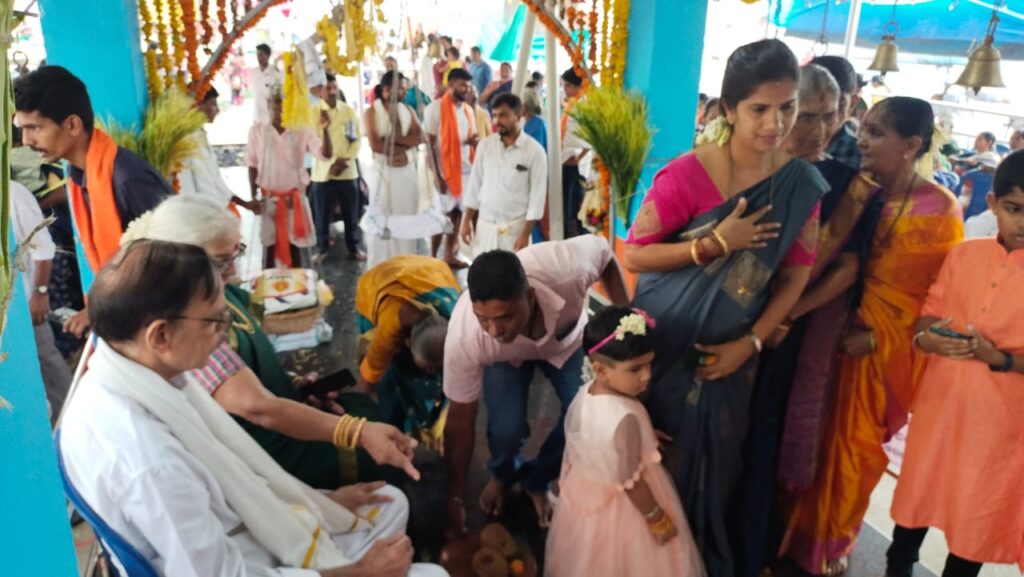
The yearly car festival of Mahalingeshwara Temple in Sural is celebrated with gaiety and pomp, in the Lunar month of Chatira, four days after the Full Moon day in April. (20th April, 2022). The Karnam was the second dignitary, next to the Tolahars. On the day after the Car Festival, at midday Tolahar, the Hereditary Trustee and Karnam standing on either side of the main door of the sanctum sanatorium together had to pull the curtain to open the door. Many tales were being narrated and heard about the Tolahar, Karnam and other bigwigs of the villages.
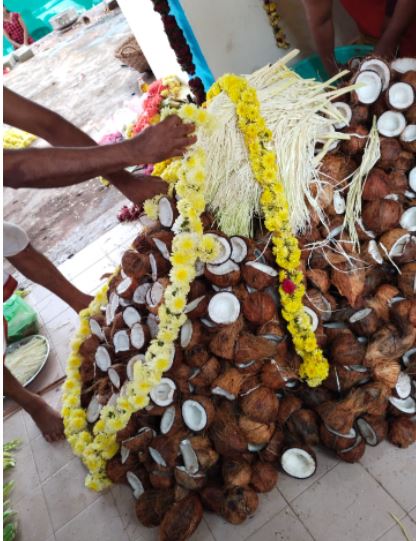
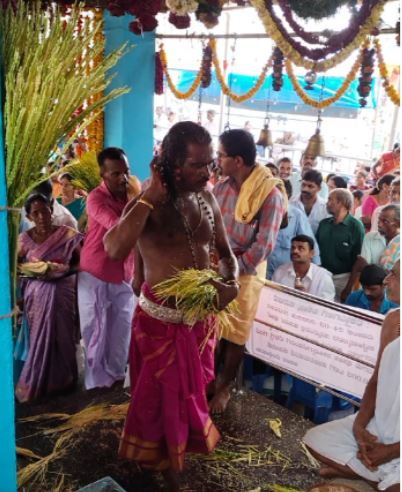
One Sample: My grandfather was a strict disciplinarian. He was punctually observing Silence (Mouna Vrutha) and fasting on Sundays. I am speaking of the pre-Gandhian era. Gandhiji did not claim originality for his principles. On the other hand, he concluded his Autobiography with: “Truth and non-violence are as old as the rivers and mountains.”
Once a car festival was held on Saturday. Karnam passed on a slip to the Ruler on Saturday itself: “Tomorrow I am observing Fast and Silence. The function may go on without my presence.” Yet as per the custom, on Sunday morning the Royal Palanquin arrived at the Karnam’s house. Karnam returned the Palanquin. A disturbed Tholahar orally ordered: “From the next year onwards Karnam will not be provided the services of the Palanquin to attend the function at the Temple.”
Next year, with his traditional dress, Dhohti, coat, and headgear, Karnam started early. On the midway Palanquin was being brought. He refused to get into it. “I am the first subject. It is my duty to follow the ‘diktat’ of the Arasaru ”. Every year he used to visit Dharmasthala and receive a new pair of clothes from the Heggade as a gift. If he could not go, Heggade, a grandson/ nephew of the Tholahar, used to send them with some responsible person of the Manjunatha Temple, Dharmasthala.
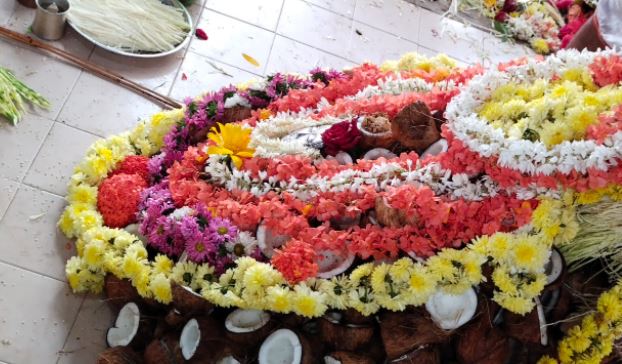
My eldest maternal uncle Anandarama Somayaji, a trained Karnam, the first issue of my maternal grandparents, predeceased my grandfather. He was not married. Bhojaraja Somayaji and Bhujangaraya Sasthry had already selected their careers. Hence the mantle of the Karnam fell on the third son Ramachandra Somayaji.
Ramachandara Somayaji scored high marks in his SSLC examinations of the Board of Secondary Education of the Government of Madras through Milagres High School, Kalyanpur, Udupi Taluk, South Kanara dist., in 1930’s. He had many avenues to pursue a brighter career. His contemporaries became even Dy.Collectors and Head Masters of High Schools and Lecturers in Colleges. Yet he bowed to the family tradition, honour and prestige and succeeded his father, as Kaarnam during his lifetime itself. He continued as Karnam of Hosur and Kenjur Villages till the hereditary ship was abolished in late 1960’s. Option was given to become a Village Accountant. He refused to become subservient to anyone and continued to be a farmer till the end, without bowing his head to anybody. Karnam was all in all of the Village. He was not subordinate to anybody.
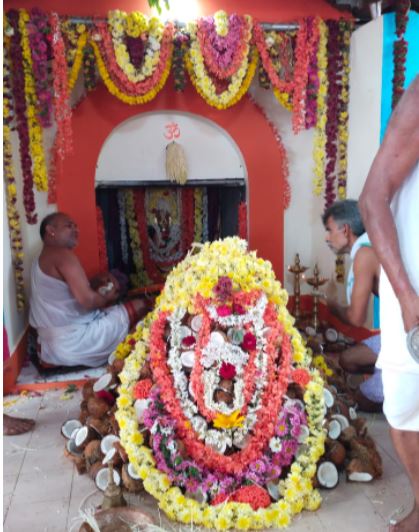
Though without Palanquin, other traditions continued and Ramachandra Somayaji enjoyed the honor till the Hereditary Ship was abolished. I am not aware of the present traditions. Though only a matriculate, he learned Kannada and English. He possessed a library, with rare collections. Classical Kannada Ramayana was his favorite piece of literature. Every evening he used to recite some verses from the epic. Complete works of Shakespeare, whom he could quote offhand, were one of his collections. Revenue Inspectors, Dy Thahsildars, and Tahsildars used to come to him for drafting letters and notes, both in Kannada and English. He wanted to construct a separate house. Deputy Collector was designated authority to permit felling the trees from the Govt woods. When he applied for permission, the Dy Collector told Ramachandra Somayaji: “You need no permission. Nobody will doubt your integrity. You cut as many trees as you want” and tore off the application. A few months later the Dy collector asked Ramachandra Somayaji: “How far has your house construction work progressed?” He replied: “You don’t want me to construct a house. So I dropped the idea!” A fresh application was made, permission granted and the house was completed within six months. Almost all the Village Officers of pre and post-independent India were known for transparent honesty and integrity. (to be concluded)

(KC Kalkura, Advocate and Social Activist, President: Gadicharla Foundation, Andhra Pradesh Library Association, Kurnool. AP)
Very interesting nostalgic memories of Kalkaura jee 👌👍👏 anxiously waiting for the following episode #Udupi #karanam